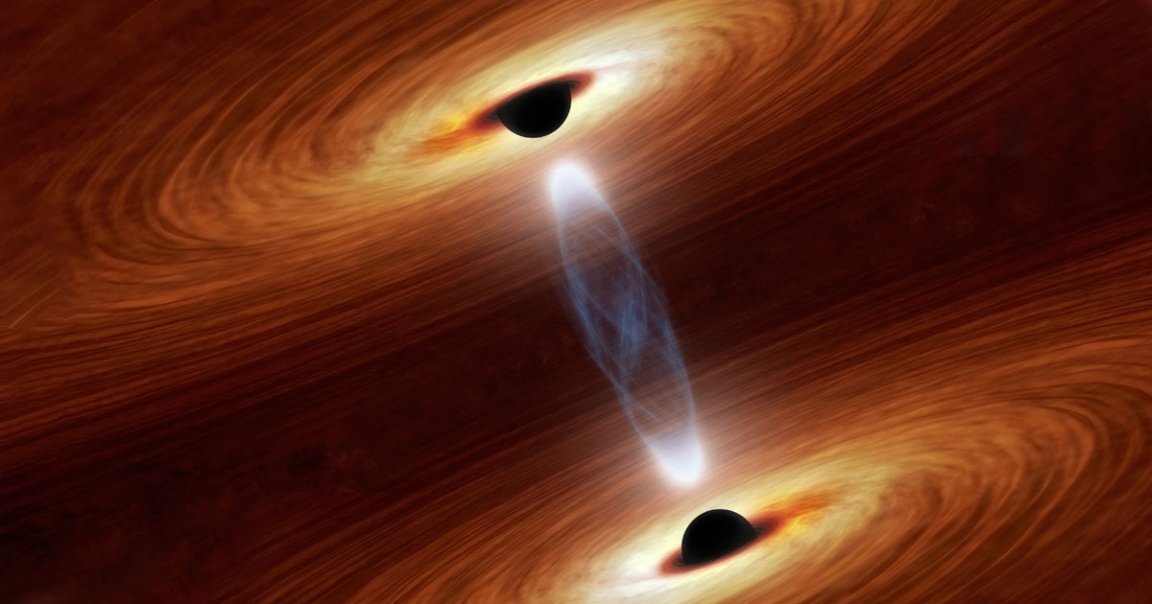
Collision Course
Two supermassive black holes, each 800 million times more massive than our sun, are on a cosmic collision course with each other.
Thankfully, the two black holes are both about 2.5 billion light-years away from us here on Earth, according to research published in the journal The Astrophysical Journal Letters on Wednesday, so it will take 2.5 billion years for astronomers to detect the cosmic waves given off by the collision. But in the meantime, their very existence could help astronomers better understand black holes throughout the universe.
When the black holes reach the final days of their fated approach, they’ll give off gravitational waves a million times stronger than those that were first discovered at LIGO, Flatiron Institute for Computational Astrophysics scientist Chiara Mingarelli explained in a Princeton University press release.
“Supermassive black hole binaries produce the loudest gravitational waves in the universe,” she said.
Based on the location of other known supermassive black holes, the scientists expect to pick up the waves given off by other collisions within the next five years, per the press release. If they don’t, it’ll lend evidence to the so-called “final parsec problem,” which suggests that supermassive black holes never actually collide. Instead, it holds, they just enter an endless spiral as soon as they reach a one-parsec, or about 3.2 light-year distance from each other.
“It’s a major embarrassment for astronomy that we don’t know if supermassive black holes merge,” Princeton astrophysicist Jenny Greene said in the press release. “For everyone in black hole physics, observationally this is a long-standing puzzle that we need to solve.”
Models predict that the final parsec problem is insurmountable unless three or more supermassive black holes all merge together. If that’s true, then the astronomers won’t detect any of those thunderous gravitational waves.
But if the astronomers do pick up on new waves in the next few years, it’ll mean supermassive black holes actually can collide with one another and merge into even bigger stellar monstrosities — a discovery that would doom the two faraway black holes to their distant collision.
READ MORE: Astronomers have discovered a distant pair of titanic black holes on a collision course. [Princeton University Newsroom]
More on black holes: Bizarre Black Hole “Drags” Spacetime, Blasts Wobbling Plasma Jets
Editor’s note 7/11: An earlier version of this story mistakenly used light-years as a measure of time. It has been updated.